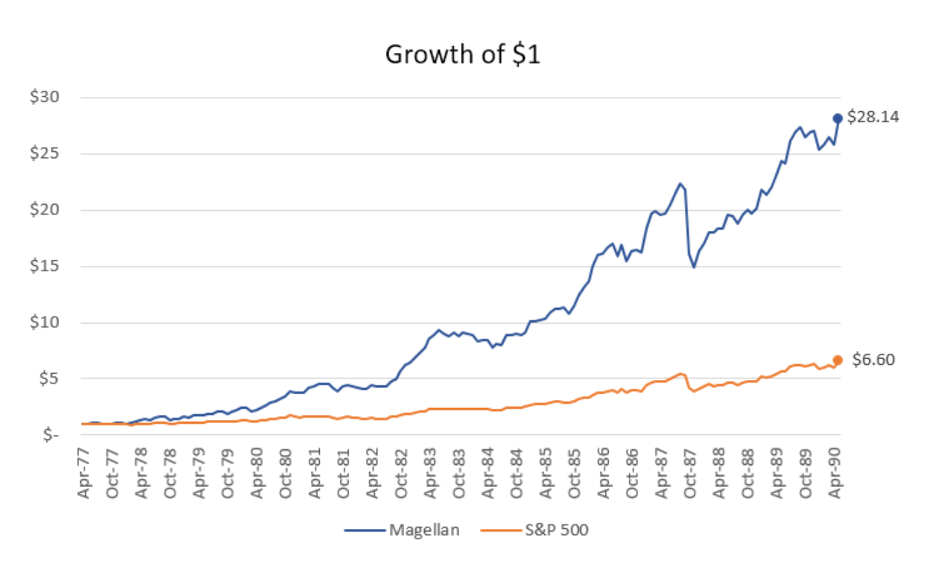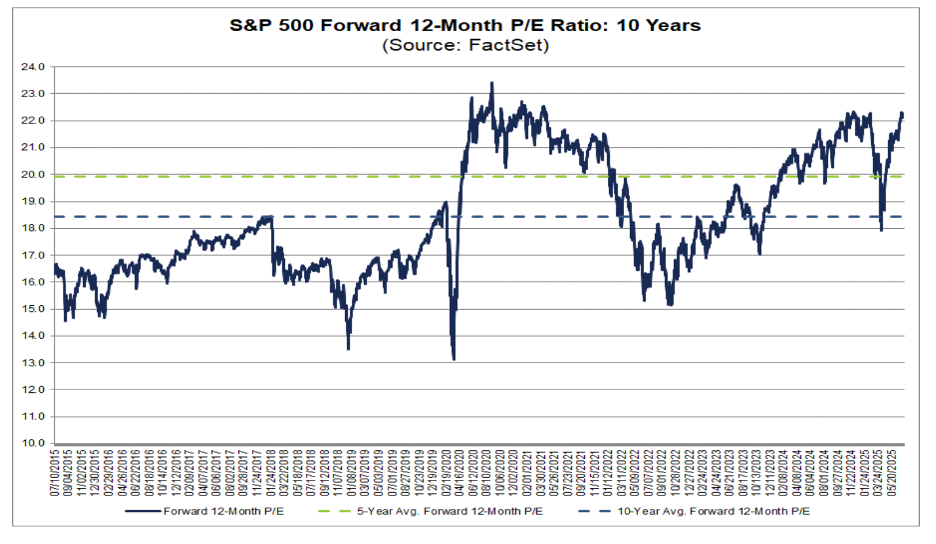Warren Buffett… Peter Lynch… Sir John Templeton – if there was a Mount Rushmore of investing, those three would be on it.
They all generated massive outperformance throughout their investment careers, and today, their success should not only be celebrated but learned from.
That’s especially the case given what’s going on right now.
There are several macro risks on the horizon – the uncertainty around trade is near the top of the list.
At the same time, markets hover near all-time highs, and not just in nominal terms. The S&P 500’s forward price-to-earnings (P/E) multiple is nearing levels we haven’t seen since 2021 (more on that in a minute).
As I told readers in a recent update for The Wide Moat Letter:
I would not be the least bit surprised to see the market turn lower in the weeks ahead. And if it happens, I don’t want you to be surprised either.
Some investors might be tempted to ring the register, take their profits, and wait for a bout of macro weakness to reallocate those funds.
That’s a fool’s errand…
You don’t have to take my word for it. All three of those old masters I mentioned above eschewed a short-term mindset.
The fact is no one can consistently time the markets well in the short term. Even some of the greatest investors to ever live can’t do it. But they don’t have to.
Buy. Then Hold.
Warren Buffett famously turned an investment in a struggling textile business into one of the world’s largest holding companies. From 1965 to 2024, Berkshire Hathaway’s stock price has appreciated by more than 5,502,000%. That’s a 19.9% compound annual growth rate (“CAGR”) over that 59-year period, nearly doubling the S&P 500’s CAGR of 10.4% over the same time.
Peter Lynch is famous for his time managing the Fidelity Magellan Fund. Lynch was in charge of this mutual fund for decades. From 1977 to 1990, its assets under management increased from just $20 million to more than $14 billion… and delivered an annual average return of 29.2%. That crushed the S&P 500’s 15.8% total return CAGR during those same years.
Source: The Personal Finance Engineer; Morningstar
John Templeton doesn’t get the same modern fanfare as Buffett and Lynch, but his track record is no less impressive.
Templeton, a Rhodes scholar, famously borrowed $10,000 in 1939 and bought 100 shares of each company trading for less than $1 per share on the New York Stock Exchange.
Japan’s attack on Pearl Harbor was still a few years down the road, but war was raging in Europe, and Templeton believed that the pessimism in the stock market was far too great. He sold most of those shares four years later for $40,000. That’s equivalent to nearly $725,000 today.
In 1958, he established the Templeton Growth Fund. This fund averaged a roughly 15% annual growth rate over the next 38 years until he retired.
To put that into perspective, a $10,000 investment into the Templeton Growth Fund at inception would have been worth more than $2 million when the fund was sold to the Franklin Group in 1992.
What do these three men have in common?
They were all staunch advocates of buy-and-hold investing.
Have Conviction
Each man believed that the best investing practice was to buy shares of high-conviction, high-quality, undervalued companies and then sit back, patiently take advantage of their growing fundamentals, and let the shares compound higher over the long term. More often than not, that’s what stock in high-quality companies do.
Regarding market timing, Peter Lynch famously said, “Far more money has been lost by investors preparing for corrections, or trying to anticipate corrections, than has been lost in corrections themselves.”
That’s the type of quote you should have taped to your mirror. Look at it every time you brush your teeth.
In other words, ignore the noise. Look past the headlines. Focus on the long-term growth prospects of wonderful companies.
None of this is groundbreaking stuff, but it bears repeating all the same.
War, political upheaval, and technological disruption have been a constant throughout mankind’s history. That’s especially the case over the last hundred years or so. However, throughout all of this turmoil, immense amounts of wealth have been created by companies that took advantage of the changing landscapes and prospered.
Buffett was even more point blank in his 1988 letter to shareholders when he wrote, “In fact, when we own portions of outstanding businesses with outstanding managements, our favorite holding period is forever.”
Does Buffett sell shares from time to time? Sure, he does. So did Lynch and Templeton. But, for the most part, they were able to maintain the patience and discipline required to hold stocks for years and years. And it served as the foundational principle for their success.
Is today the best time ever to buy stocks?
Probably not.
The S&P 500’s forward multiple is north of 22 times, well above its five- and 10-year averages of 19.9 times and 18.4 times, respectively. Historically, the market is trading with a premium valuation attached.
Source: FactSet Earnings Insight
With the market near all-time highs, there aren’t a lot of blue-chip stocks available with attractive valuations or wide margins of safety.
Buffett, Lynch, and Templeton all loved to take advantage of market weakness when entering new positions. But when valuations looked frothy, they didn’t run for the hills either.
They did nothing… except wait.
I know, the allure of short-term profits can be enticing. That’s especially the case when fear is rising and investors are worried that their unrealized gains may turn into losses.
But remember, investing isn’t a sprint. It’s a marathon. And all you have to do to realize this is look back at the careers of the GOATs (greatest of all time). They make it clear that long-term stock ownership is much more effective than short-term trading.
I’ll leave you with one more quote, this one from Sir John Templeton: “The four most dangerous words in investing are ‘this time it’s different.'”
Things are uncertain right now. Stocks look expensive. There’s always something to worry about.
But, stay the course, stay committed, and stay invested. I think you’ll be pleasantly surprised how it all turns out.
Regards,
Nick Ward
Analyst, Wide Moat Research
|



